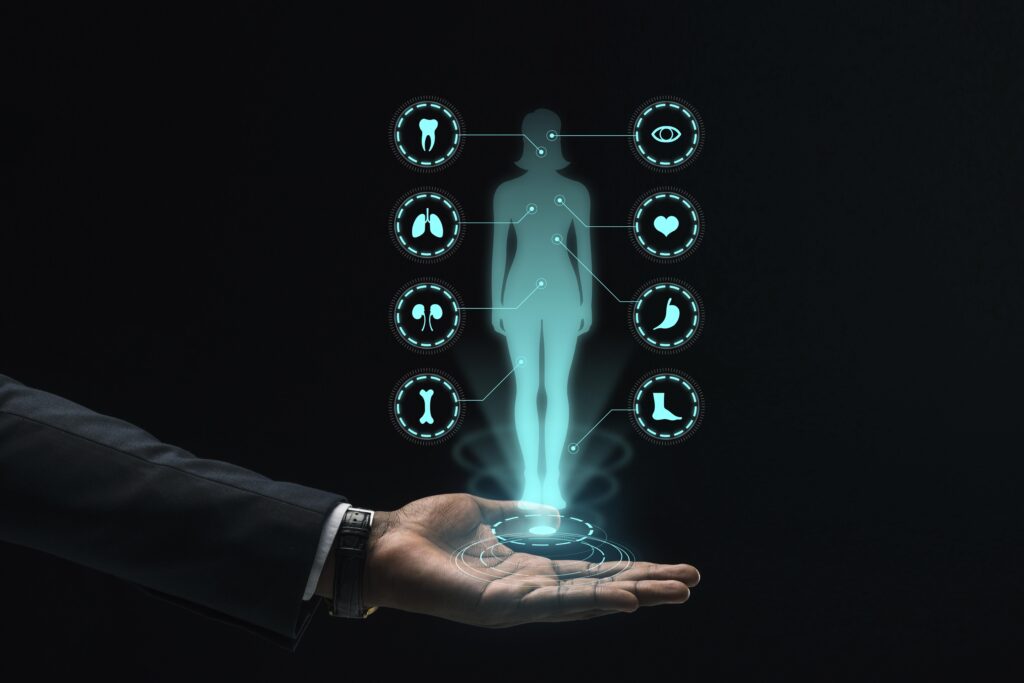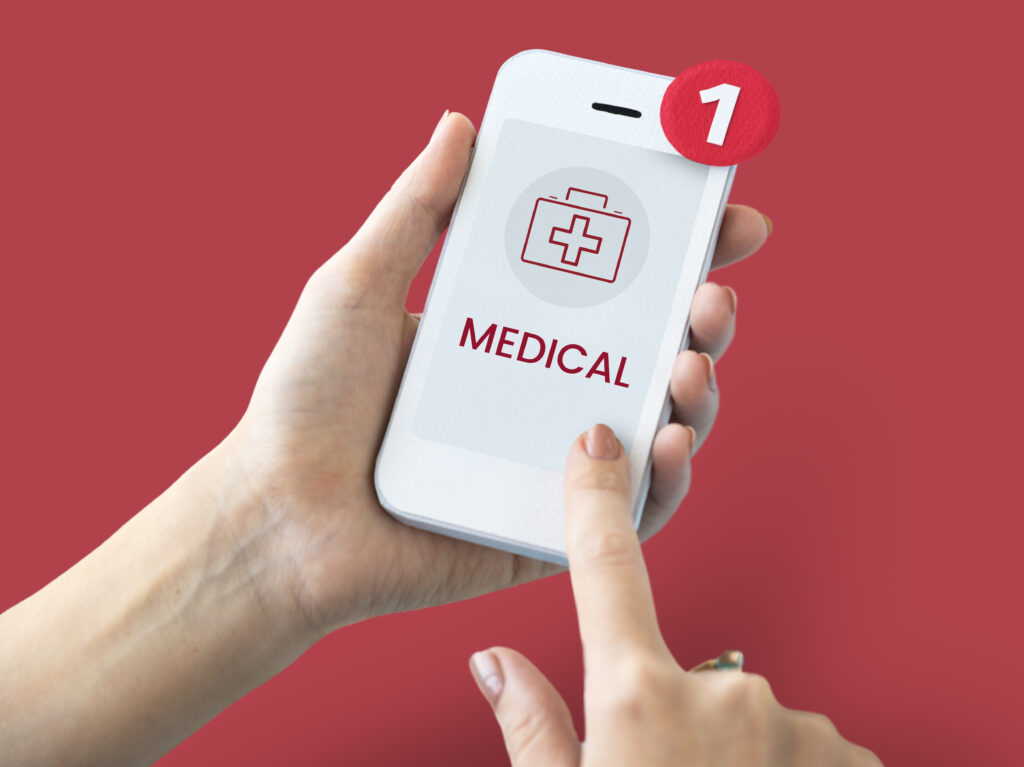Digital technology has advanced the transition of health care. From mobile medical applications and software that help clinicians make treatment decisions to artificial intelligence and machine learning tools that aid in monitoring patient conditions, telehealth, and telemedicine are flourishing by leaps and bounds. Digital health methods hold immense potential to enhance illness detection and treatment, as well as individual healthcare delivery. in this blog, we will explore what telemedicine and telemedicine are, their differences, the benefits they provide, and the profound impact they have on healthcare.
Understanding Telehealth and How Does Telemedicine Work
Telehealth: Telehealth is a broad term that includes the provision of medical services and information remotely, using a variety of technologies. This includes remote patient monitoring, online consultations, health-related mobile apps, and more. Telehealth aims to provide healthcare services outside of traditional clinical settings, allowing patients to access care from the comfort of home or on the go.
Telemedicine: Telemedicine is a subset of telemedicine, explicitly referring to clinical services provided remotely. It involves the use of audio, video, and other communication technologies to diagnose and treat patients. Telemedicine can include everything from video consultations with healthcare providers to remote surgical procedures performed using robotic systems.
Benefits of telehealth and telemedicine
- Improved access to care: Telemedicine and telemedicine eliminate geographic barriers, making it easier for people in remote or hard-to-reach areas to access medical services.
- Convenience: Patients can receive medical advice and care without having to travel, saving time and reducing the hassle of in-person visits.
- Better chronic disease management: Telehealth allows for continuous monitoring of patients with chronic diseases, helping healthcare providers detect problems early and adjust treatment plans if necessary.
- Reduced healthcare costs: By eliminating travel costs and hospital stays, telehealth can reduce the financial burden on patients and the healthcare system.
- Improved efficiency: Telemedicine can streamline administrative tasks and reduce wait times, leading to more efficient healthcare delivery.
- Continuous care: Patients can maintain regular contact with healthcare providers, promoting continuity of care and early intervention.
- Use cases for telemedicine and telemedicine: Remote consultation: Patients can consult with healthcare providers via video call on a variety of issues, from minor illnesses to mental health support.
- Remote Monitoring: Wearable devices and sensors enable continuous monitoring of vital signs and chronic conditions, allowing rapid intervention. Electronic prescriptions: Healthcare providers can send pills to pharmacies electronically, reducing the need for in-person visits.
- Telehealth: Telehealth is increasingly being used to deliver mental health services and consultations, which is particularly useful in meeting the growing need for mental health support.
- Specialty consultation: Telemedicine can connect patients with specialists who may not be available locally.
Challenges and considerations
- Privacy and security: Protecting patient data and ensuring secure communications are top concerns when it comes to telemedicine and telemedicine.
- Regulatory compliance: Complying with healthcare regulations and licensing requirements can be complicated because they vary by location. Digital divide: Not all patients have access to the necessary technology or a reliable Internet connection, limiting the reach of telehealth services.
- Quality of care: Ensuring that the quality of care provided remotely matches that of in-person care is an ongoing challenge.
The Future of Telehealth and Telemedicine
The future of telemedicine and telemedicine is bright with continued technological advancements and growing acceptance of telehealth. As these fields continue to grow, we can expect:
- Integration with AI: Artificial intelligence will play a larger role in diagnosis, treatment planning, and remote monitoring.
- Expanded services: Telehealth and telemedicine will expand beyond primary care to specialties, expanding their reach. Interoperability: Improving interoperability between healthcare systems and devices will improve the flow of patient data.
- Improved use experience: Developing user-friendly platforms and applications will make telemedicine services more accessible to more patients.
Why are Digital Health and Telemedicine the most promising frontier of Healthcare Infrastructure?
COVID-19 has shown to the world that we need to rethink our medical and healthcare infrastructure. We need a system that is as swift with its responses as the spread of the disease. Another essential takeaway from the raging pandemic is how understaffed we are when it comes to healthcare personnel. There’s still a large section of the population that is deprived of primary healthcare facilities. Technology once again has proven to be a potential solution for the ongoing health crisis. The immense contributions of digital technologies in tackling the recent pandemic and large-scale deployment of technology-assisted medical systems for remote monitoring of patients have paved the way for increased adoption of Digital Health and Telemedicine tools.
How Telehealth & Telemedicine is Revolutionizing the Healthcare Sector?
Remote Healthcare Delivery
One of the primary benefits of telehealth and telemedicine is remote healthcare delivery. For many residents, it’s strenuous to acquire the care they require. The m-Health initiatives, as well as telemedicine, offer appealing ways to bridge the gap. Patients can easily avail expert analysis and treatment recommendations right in the comfort of their homes.
Care Standardization
Patients receive care that has been demonstrated to be the best when clinical protocols are used that are evidence-based and verified through scientific research and clinical trials. This is aided by the use of technology and information to test treatment outcomes, reduce feedback time, and improve healthcare professional decision-making. While the presence of such guidelines is critical, so is the capacity for practitioners to quickly and easily access them. Telehealth and telemedicine paired with AI and machine learning enable access to the patient’s medical data easily and assist doctors in devising the most effective treatment plan.
Integrated Care
The purest form of digital health involves the unification of all patient data across several platforms and the use of effective interfaces to improve data flow. The sharing of information and the integration of services facilitate the provision of care by practitioners rather than individuals. As proven by a recent study that found that when patient information was shared inside health information exchanges, the quality of service increased, and expenditures were lowered considerably.
Telehealth & Telemedicine: Meeting Health Care Demand Through the Aid of Technology
Telehealth and telemedicine provide unique options for meeting healthcare demands. It’s paving the way for a new era in healthcare worldwide – enhancing quality, expanding access, and lowering prices. Digital health tools, with their rapid rise, offer the most provocative approach to tackling the rising healthcare crisis across the globe. Additionally, it extends quality healthcare to remote regions of the planet which are still largely deprived of such services.
Conclusion
Telehealth and telemedicine are reshaping the healthcare landscape, providing patients with greater access, convenience, and quality of care. With continued advancements and widespread adoption, these digital approaches to healthcare are poised to become an integral part of the modern healthcare system, paving the way for improved outcomes. better health care outcomes and a healthier society.



